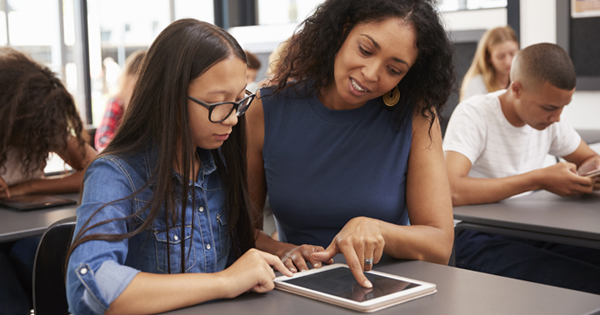
Three Innovative Methods of Teaching for High School Educators
This post has been updated as of February 2020.
If you’re interested in shaking up your teaching in innovative ways that keep your students engaged and excited — in this very short-attention-span world we live in — we would love to help.
We believe that finding new and innovative methods of teaching is a crucial skill for high school teachers. Brain research has actually shown that certain methods and approaches can truly enhance the learning process and, done right, applying innovative learning and attention-management techniques to classes is a win-win for both students and teachers. Read on.
Visualization, technology tools, and active learning
1. Visualization
It can be very hard for students to understand a list of disconnected facts. Knowledge that is organized and connected to concepts with a goal of mastery, including the ability to visualize the concepts, can lead to the ability to transfer knowledge and to a deeper, longer-term understanding of what is being taught.
Visualization is an especially good teaching strategy for reading and literacy teachers. Check out this lesson in how to use visualization to help students illustrate mental images from a portion of text that is read aloud:
Teaching students visualization skills help them understand, recall, and think critically about the subjects they study.
2. Wisely managed classroom technology
Computers, tablets, digital cameras, video conferencing technology, and GPS devices can all enhance a student’s learning experience. Possible uses of classroom technology include using video games to teach math and foreign languages, leveraging Skype to communicate with classrooms or guest speakers from around the world, or multimedia projects that allow students to explore subject matter using film, audio, and even software they create.
However, introducing new tech devices in the high school classroom often requires that teachers add an element of educational technology leadership to their usual classroom management. Giving students laptops or tablets, for example, means teaching them to use devices respectfully and preventing damage to the equipment. Tech-savvy teachers gave Education Week the following advice on using classroom technology:
- Explain that the use of tech tools in class is a privilege not everyone has — and, if abused, it can be discontinued.
- During class, teachers should move around the classroom or use monitoring software to ensure students are using their devices appropriately. When they understand that you will intervene if they go off-task, students know they must focus on their assignment.
- Put students in charge of the upkeep of devices. Classes can learn tech terms, basic maintenance tasks, and appoint a few students to serve as tech monitors responsible for distributing and storing equipment. Doing this creates a sense of value and ownership for the welfare of classroom technology.
3. Active learning: Peer instruction, discussion groups, and collaborative problem solving
All high-school educators dread a roomful of blank faces or silence after they open up a topic for class discussion. According to the Johns Hopkins Center for Educational Resources (CER), devoting time to active learning projects is one way to get students thinking, talking, and sharing information in the classroom. The CER publishes a series called The Innovative Instructor that explores these methods.
One particular article in that series, Bring on the Collaboration!, describes a class structure where the instructor leads a short overview of the day’s topic and gives students a challenge to meet by the end of the class, such as answering a question or solving a problem. Students break into small groups to do research online, chart out ideas, and discuss ways to meet the challenge. Groups upload their work to a Blackboard site, where the teacher can then review it. At the end of class, each group shares what they’ve learned with their peers. The results? Higher engagement overall and students were “amazingly” on task during group work.
These are just three ideas for directions you can go in your quest for innovative teaching methods to get your students more engaged. In today’s increasingly creative world, new ideas are sprung nearly every day.
Categorized as: Tips for Teachers and Classroom Resources
Tagged as: Assessment Tools, High School (Grades: 9-12), Leadership and Administration
